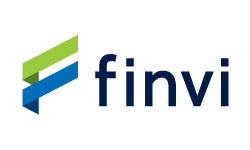Source: site

A lot has changed since Congress in 2019 directed the U.S. banking agencies to tailor regulations for banks’ risk profiles. But the thresholds that determine application of different levels of bank regulations have not changed enough to reflect the different economic reality –– inflation and economic growth.
By the Numbers
Over the past decade, the general price level increased by 32 percent and nominal GDP by 66 percent. By comparison, total banking assets expanded 61 percent during this time.
What’s at Stake
Unadjusted regulatory thresholds can sweep in banks to more stringent requirements, without any increase in the banks’ risk. This imposes unnecessary regulatory costs that are ultimately borne by households and businesses and subjects midsize or regional banks to requirements designed for large, globally active banks.
State of Play
The FDIC recently proposed to adjust certain regulatory thresholds for inflation and to automatically index them going forward. This is a positive development, but additional action coordinated across all the federal banking agencies is necessary to ensure bank regulation is tailored, with thresholds that adjust over time to account for economic growth.
- In addition to automatic indexing of dollar thresholds, the banking agencies should revisit the definitions of prudential regulatory categories, and the requirements applied to each category. There is currently little difference in regulatory requirements across firm categories.
- The banking agencies committed in the 2019 tailoring rules to periodically update category thresholds to ensure that the rules align with their objectives. BPI has long called for automatic indexing of the dollar thresholds instead of such periodic evaluations. The agencies have neither engaged in the promised periodic reviews nor implemented automatic indexing, despite significant inflation and economic growth over the last six years.
- The “Method 2” GSIB surcharge imposed on the largest banks is an example of a regulation using metrics that, if retained, should be updated for economic growth, as promised both when finalized in 2015 and again in 2023.
Bigger Picture
The FDIC’s indexing proposal marks progress toward maintaining a tailored regulatory framework. However, to fully deliver on Congress’ statutory intent to tailor bank regulations, the banking agencies should collectively take actions to ensure that bank regulations correspond to banks’ risk profiles. A tailored, dynamic regulatory system supports the economy; a static one stifles it.




